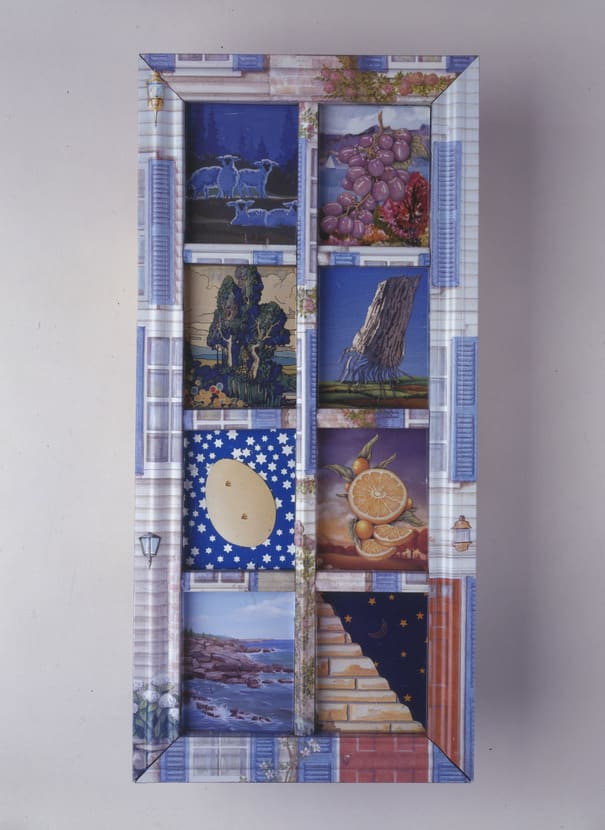
- Object Name:
- Seder Plate
- Artist/Maker:
- Harriete Estel Berman
- Bio:
- American, b. 1952
- Title:
- A Woman Belongs on the Bimah as Much as an Orange Belongs on a Seder Plate
- Place Made:
- San Mateo, California, United States
- Date:
- 2000
- Medium:
- Pre-printed steel dollhouses, recycled tin containers, and Plexiglas
- Dimensions:
- 18 3/4 × 8 7/8 × 2 in. (47.6 × 22.6 × 5.1 cm)
- Credit Line:
- Purchase: Phil and Norma Fine Foundation Fund
- Accession Number:
- 2002-1
Not On View
During the Passover seder, some Jews place an orange among the traditional symbolic foods on the seder plate. The new practice probably evolved from a ritual created by Jewish Studies scholar Susanna Heschel, who added the orange to the plate as a symbol of the fruitfulness of tolerance in a gesture of solidarity with gays and lesbians. The title of Harriete Berman's work refers to an apocryphal story said to have inspired the new feminist ritual, in which a man exclaimed, "A woman belongs on the bimah as much as an orange belongs on a seder plate!" during a heated discussion about ordaining women rabbis.
Information may change as a result of ongoing research.